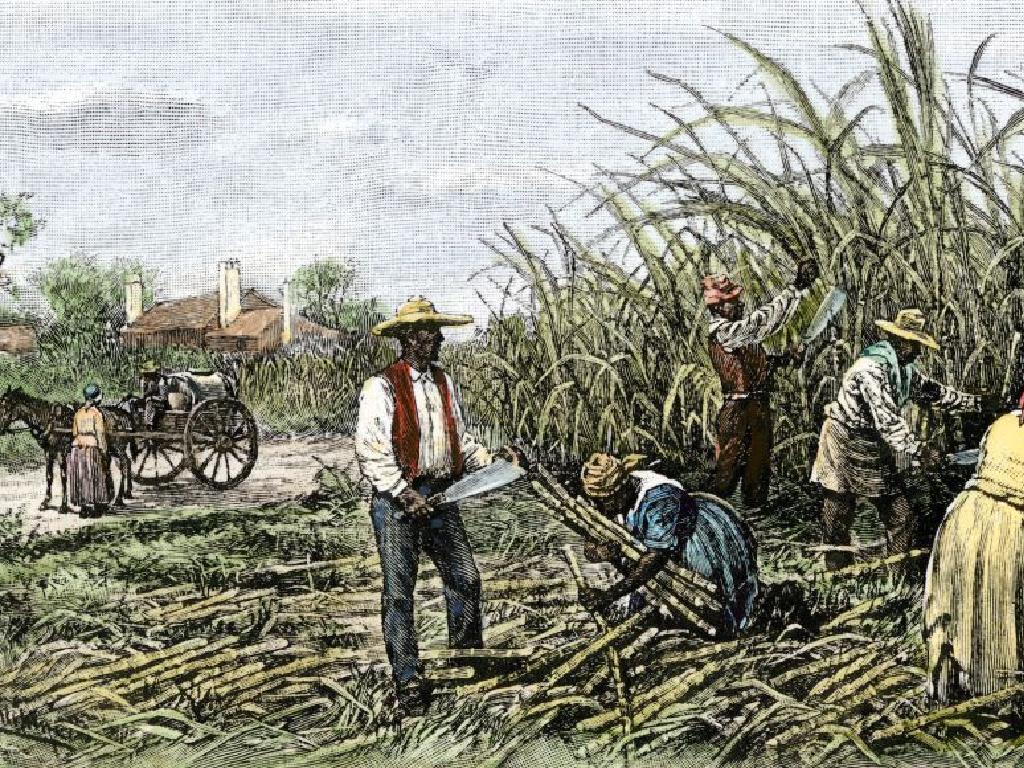Origins And Development Of The Mali Empire
Subject: Social studies
Grade: Sixth grade
Topic: African Empires
Please LOG IN to download the presentation. Access is available to registered users only.
View More Content
Exploring the Mali Empire
– Introduction to African Empires
– Mali Empire’s prominence
– Once a powerful state in West Africa, known for wealth and learning
– Significance in history
– Influential in trade, culture, and education during its peak
– Mali’s rich cultural heritage
– Home to Timbuktu, a center of Islamic scholarship
|
This slide introduces the Mali Empire as part of the broader study of African Empires. Emphasize Mali’s role as a powerful West African state, renowned for its wealth, extensive trade networks, and centers of learning, such as Timbuktu. Discuss the empire’s historical significance, including its influence on trade routes across the Sahara Desert and its contribution to the spread of Islam and culture throughout West Africa. Highlight the importance of understanding the Mali Empire to appreciate the rich and diverse history of Africa. Encourage students to think about how empires like Mali shape our understanding of history and culture.
Geography of the Mali Empire
– Locate Mali Empire on Africa’s map
– Found in West Africa, south of the Sahara Desert
– Discuss region’s geographical features
– Consisted of savannas, plains, and the Niger River
– Significance of the Niger River
– The river was a source of water, food, and transportation
– Impact on Mali’s development
– Geography influenced trade, agriculture, and wealth
|
This slide aims to give students a clear understanding of where the Mali Empire was located and the geographical features that were significant to its development. Show a map of Africa and point out the Mali Empire’s location. Discuss the savannas and plains, which were conducive to agriculture and settlement. Emphasize the importance of the Niger River as a life source that provided water for farming, a means of transport for trade, and a source of fish for food. Explain how these geographical advantages contributed to the empire’s wealth and growth, making it one of the most powerful empires in African history. Encourage students to think about how geography can affect the development of a civilization.
Origins of the Mali Empire
– Sundiata Keita, the Lion King
– Founder of the Mali Empire, hero of the Mandinka people.
– Mali’s rise post-Ghana Empire
– After Ghana’s decline, Mali emerged as a powerful empire.
– Kinship’s role in Mali’s formation
– Strong family ties helped unify Mali’s diverse groups.
– Trade’s impact on Mali’s growth
– Wealth from gold and salt trade bolstered Mali’s economy.
|
This slide introduces the legendary beginnings of the Mali Empire with Sundiata Keita, known as the Lion King, who laid the foundation for the empire. Students should understand the transition of power from the fallen Ghana Empire to the rise of Mali, emphasizing the importance of kinship and alliances in this process. Additionally, the role of trade, especially in gold and salt, was crucial in establishing Mali’s wealth and influence. Discuss how these factors combined to create a strong and prosperous empire. Encourage students to think about how leadership, resources, and social structures can affect the development of a civilization.
Golden Age of the Mali Empire
– Mansa Musa’s pilgrimage to Mecca
– Mansa Musa, the emperor, made a famous pilgrimage that showcased Mali’s riches.
– Mali’s wealth and global influence
– Mali’s gold and salt trade extended its influence across continents.
– Timbuktu as a cultural hub
– Timbuktu became synonymous with wealth and education.
– Education and scholarship in Timbuktu
– It housed universities and libraries, attracting scholars.
|
This slide explores the zenith of the Mali Empire during the reign of Mansa Musa, one of the wealthiest individuals in history. His pilgrimage to Mecca in 1324 CE was a significant event that highlighted the empire’s prosperity. The Mali Empire was rich in resources like gold and salt, which were highly sought after globally, enhancing its economic and political power. Timbuktu, a city within Mali, emerged as a beacon of culture, learning, and religion, drawing intellectuals from around the Islamic world. The city’s universities and libraries became centers for the exchange of ideas and knowledge. Discuss the importance of trade and education in the empire’s development and encourage students to think about the connections between wealth, power, and culture.
Government and Society of the Mali Empire
– Hierarchical structure explained
– The emperor, nobles, free people, and slaves formed the hierarchy.
– Social classes and their roles
– Nobles advised the emperor, free people worked trades, slaves did manual labor.
– Islamic law in governance
– Islamic law shaped the legal system and moral guidelines.
|
The Mali Empire had a well-defined hierarchical structure with the emperor at the top, followed by nobles, free citizens, and slaves. Each group had specific roles and responsibilities that contributed to the empire’s functioning. Nobles often served as advisors and officials, while free people engaged in various trades and farming. Slaves were tasked with labor-intensive work. Islamic law, introduced through trade and scholarship, played a significant role in the governance of the empire, influencing the legal system and providing moral and ethical guidelines. Discuss how this structure supported the empire’s stability and growth, and compare it to social structures in other historical and modern societies.
Economy and Trade in the Mali Empire
– Trade’s impact on Mali’s wealth
– Trade with other regions brought prosperity and made Mali a powerful empire.
– Diversity of goods traded
– Goods included gold, salt, ivory, and slaves, traded within Africa and with Europe and Asia.
– Gold and salt trade routes
– Key commodities that were highly sought after and central to Mali’s economy.
– Economic significance of trade
|
This slide explores the economic foundations of the Mali Empire, emphasizing the crucial role that trade played in its prosperity. Students should understand that Mali’s strategic location and control of trade routes allowed it to flourish by trading valuable resources like gold and salt. These trade routes connected Mali to other parts of Africa, as well as to Europe and Asia, facilitating cultural and economic exchanges. Highlight the importance of gold and salt as the backbone of Mali’s economy and discuss how trade contributed to the empire’s ability to maintain wealth and power. Encourage students to think about how trade affects economies today and the value of natural resources in global trade.
The Decline of the Mali Empire
– Factors leading to decline
– Economic issues, loss of trade control, and leadership struggles weakened the empire.
– Rise of rival states
– Neighboring states like Songhai challenged Mali’s dominance.
– Internal conflicts impact
– Power struggles and civil war led to further destabilization.
– Mali’s enduring legacy
– Despite decline, Mali’s cultural and scholarly contributions remain influential.
|
This slide examines the reasons behind the decline of the Mali Empire, an important topic in understanding the complex history of African empires. Students should learn about the various internal and external factors that contributed to the empire’s weakening, such as economic troubles, loss of control over trade routes, and leadership issues. Additionally, the emergence of powerful rival states like Songhai played a significant role. Internal strife, including family rivalries and civil war, exacerbated the decline. Despite these challenges, the Mali Empire left a lasting legacy through its contributions to culture, education, and Islam, which continued to influence the region long after the empire’s fall. Encourage students to think about how empires rise and fall and the lasting impacts they can have on history and culture.
Mali Empire’s Enduring Legacy
– Mali’s influence in today’s culture
– Elements of Mali’s rich culture, like music and oral traditions, persist today.
– Value of studying history
– Understanding history helps us appreciate our past and shape our future.
– Mali’s impact on the modern world
– The empire’s advancements in trade, scholarship, and governance still resonate.
|
This slide aims to connect the historical significance of the Mali Empire with its lasting influence on contemporary culture and the importance of historical study. Highlight how the empire’s traditions, particularly in music and storytelling, continue to be a part of West African culture. Discuss the value of learning history to gain insight into current societal structures and to learn from past achievements and mistakes. Emphasize Mali’s contributions to commerce, education, and political systems, and how these have laid foundations for practices and institutions around the world. Encourage students to think about how the past influences the present and to consider the ways in which ancient civilizations remain relevant today.
Class Activity: Create Your Empire
– Divide into groups, pick an empire location
– Choose resources and trade goods
– Design a government and social hierarchy
– Present your empire’s strengths
|
This activity is designed to help students apply their knowledge of the Mali Empire by creating their own empires. Divide the class into small groups and have each group choose a location for their empire, considering factors like geography and climate. Next, students should decide on the natural resources available in their chosen location and determine what goods they would trade. They will then create a government structure and social hierarchy, drawing inspiration from historical examples. Each group will present their empire to the class, focusing on its strengths and potential for success. Encourage creativity and critical thinking. Possible variations of the activity could include creating a map of their empire, designing a flag, or writing a short history of their empire’s rise to power.






